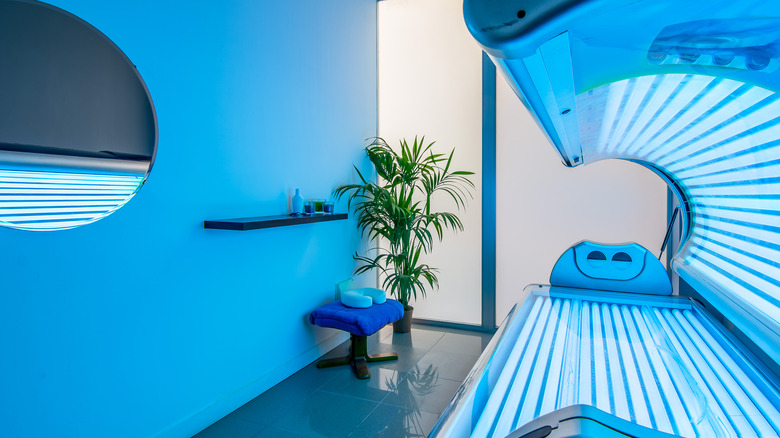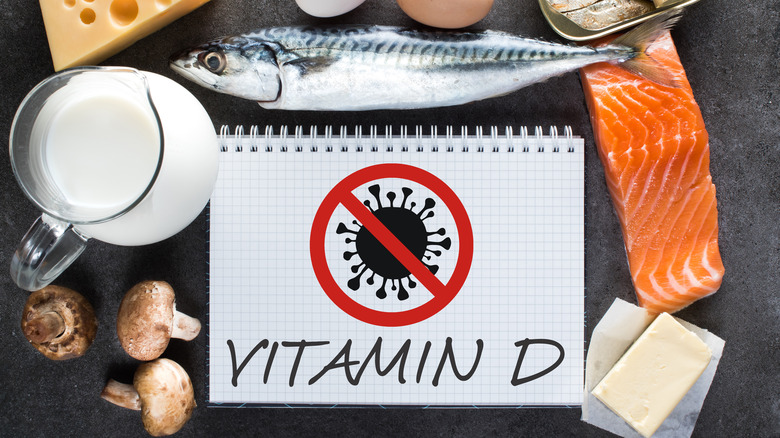Can You Get Vitamin D From A Tanning Bed?
Vitamin D deficiency has become a very common problem worldwide. According to Healthline, an estimated 1 billion people do not have an adequate amount of the vitamin in their blood. In the U.S., about 41% of the adult population does not get enough vitamin D. That increases to 69% among Hispanic adults and 82% among African Americans.
Vitamin D is crucial to maintaining a healthy immune system. The body manufactures it from cholesterol when sunlight shines on skin, and also pulls it from certain foods like fish. But with concerns over skin cancer, more and more people are using sunscreen, making exposure to the sun's rays less frequent. A tanning bed might seem like one option to try to boost vitamin D levels.
According to tanning salon Glo Sun and Shades, if you lay in a tanning bed until your skin begins to turn pink, your body can produce a lot of vitamin D. The National Institutes of Health recommend that, with the exception of infants and the elderly, people should get 600 international units (IU) of vitamin D per day. Glo Sun and Shades say that a tanning bed makes your skin churn out between 10,000 and 50,000 IUs of the vitamin — an impressive claim, to be sure. But is it true?
There may be safer options
The American Academy of Dermatology refutes the idea that you can get loads of vitamin D from a tanning bed. That's because the bulbs used in tanning beds primarily give off UVA light rays, but the body needs UVB rays to produce vitamin D. Not only will tanning beds not give you a dose of vitamin D, but they also warn that tanning beds aren't a risk-free way to get a tan. Tanning beds can significantly increase your chances of getting skin cancer after just one visit to the salon.
In order to avoid the damaging, potentially harmful, and aging effects of the sun's rays, they advise getting vitamin D from eating a healthy diet. Healthline notes that some vitamin D-rich foods include salmon, herring, canned tuna, egg yolks, milk, and orange juice. If your vitamin D levels are still low, you can take a supplement.
Vitamin D deficiency is a very real health concern, but tanning beds aren't the solution.

